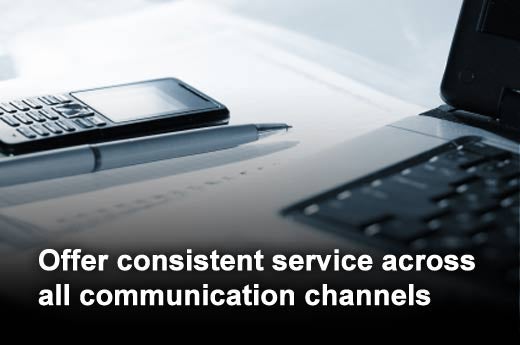Providing quality customer service is one of the most critical components for the help desk, yet it is difficult to achieve. One way to improve end-user satisfaction is by incorporating self-service capabilities into your help desk solution. Selecting a solution that makes delivering quality service easier by enabling end users to help themselves ensures that the number of calls placed to the help desk is kept to a minimum, improves overall productivity and efficiency of both the IT department and the end user, and ensures end-user happiness. It’s as simple as that.
Based on her ten years of IT and technology experience, Elisabeth Cullivan, product marketing manager at Numara Software for Numara FootPrints and Track-It! family of integrated IT management solutions, shares five tips for optimizing the end user experience through better self-service.
Click through for five tips that can help you optimize the end-user experience by providing better self-service support, as identified by Numara Software.
The interface of the self-service portal must be intuitive. Users don’t have the time or patience to try to figure out how to navigate the portal to accomplish tasks. Icons should be clearly labeled with defined functions and should be large in size so users understand their purpose immediately. It is important that the portal functions logically.
Sure, you can create a large icon that says “add a work order,” but what happens once the user clicks this icon? Does it bring him or her to a confusing page where it’s unclear what to do next? Does it take 10 clicks to simply submit a work order? Creating a portal in which users can easily add and submit work orders on their own and access the information they find most important, will help to reduce the number of calls to the help desk. In addition, by creating an intuitive interface, extensive end user training may be avoided.
Consistency is key. It is very important to offer the same level of service regardless of the communication channel an end user is using, whether it is telephone, email, chat or the self-service portal. A person who is taking advantage of a self-service solution should get equivalent, if not better, service. Users should feel like they are dealing with one company, using a single technology with consistent knowledge at each touchpoint.
Surprisingly, too many self-service portals are not easily searchable. The portal should support the concept of knowledge management, allowing users to search for knowledge articles and solve problems on their own. Empowering users to easily find information is a crucial component to any self-service portal. Search options should be clearly defined within the portal, which should be stocked with answers to the most common questions. Enable users to help themselves 24/7/365 – no need to wait for a technician.
The more hoops a user has to jump through to access the information they need, the less likely they are to use the solutions. Users should be able to access the self-service portal with integrated Microsoft® Windows authentication. The ability to integrate with programs such as Microsoft Windows makes it that much more convenient for users. Users simply have to remember one password and they will automatically be signed onto their PC as well as into the service portal.
These days users are increasingly on the go and often times using different PCs to complete various tasks. This is why it is so important to make self-service solutions available through a Web interface, accessible anywhere, anytime. Without being tied to a single PC, users have a greater level of flexibility and freedom, which increases productivity within the IT department and contributes to the overall satisfaction of the end user.








